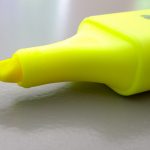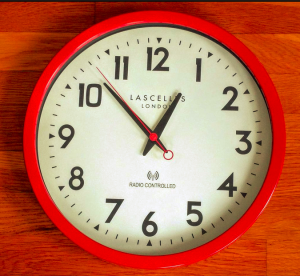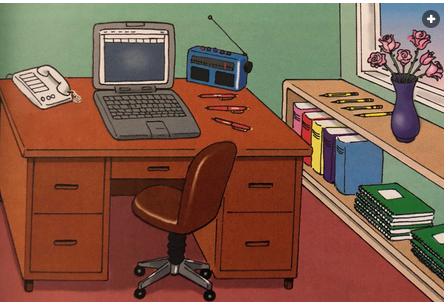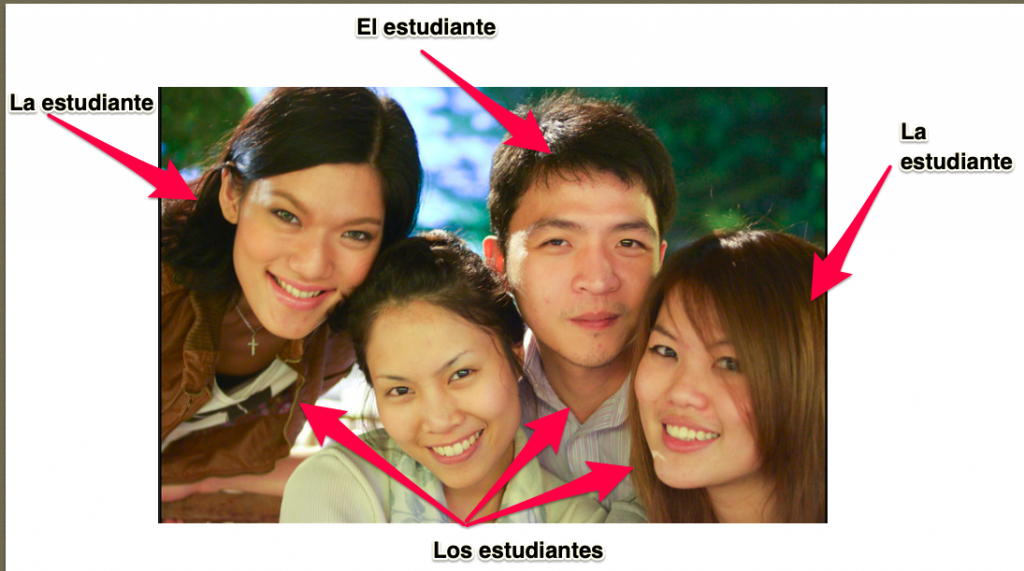1.2 Gramática: Nouns-Gender and Number
1.2 Gramática: Nouns-Gender and Number
A. GENDER: all nouns in Spanish are either masculine or feminine. Since English doesn´t have gendered nouns, it is easy to underestimate the importance of this concept in Spanish. When learning new nouns, always practice them with their gender.
| MASCULINE NOUNS | FEMININE NOUNS |
| 1. Most nouns ending in –o are masculine.
el libro, el carro, el escritorio 2. Nouns that end in a consonant el lápiz, el reloj, el ordenador 3. Nouns that end in -ma and –pa AND are cognates** el problema, el sistema, el programa, el fantasma, el mapa 4. Nouns that end in -e* el ambiente, el timbre, el estante
*There are some exceptions with this group: Common feminine exceptions: la clase, la noche, la tarde **Cognates are words that look alike, sound alike, and mean alike in both languages. Exception: LA mano |
1. Most nouns ending in –a are feminine.
la casa, la mesa, la computadora 2. Nouns that end in -ión (the English equivalent is “tion”) la televisión, la comunicación, la educación, la situación 3. Nouns that end in –ad (the English equivalent is “ty”) la universidad, la humanidad, la comunidad, la libertad
Exception: EL día
|
Certain nouns clearly denote a male or a female.
| MASCULINO | FEMENINO |
| el señor, el hombre, el chico, el estudiante, el perro, el gato | la señora, la mujer, la chica, la estudiante, la perra*, la gata*
*People who know that their pet is female will use the feminine form. If the sex of a pet or animal is unknown, the masculine form is typically used. |
 ACTIVIDAD #1
ACTIVIDAD #1
En la clase. Work with a partner to guess the gender (el or la) of the following words. Be prepared to share with the class and discuss the meaning of each word.

| Article | Nouns |
Meaning |
| bolígrafo | ||
| cuaderno | ||
| lección | ||
| lápiz | ||
| pluma | ||
| mapa | ||
| marcador | ||
| pizarra | ||
| reloj | ||
| silla | ||
| celular (móvil) | ||
| mesa | ||
| borrador | ||
| destacador |
 ACTIVIDAD #2
ACTIVIDAD #2
Write the appropriate definite article for each noun in the first column and an indefinite article for each noun in the second column.
¿el, la, los, las? ¿un, una, unos, unas?
____ señora ____ poema ____ libro ____ computadoras
____ cuadro ____ paredes ____ pluma ____ ciudad
____ lección ____ fotos ____ mapa ____ composición
____ clase ____ universidad ____ cuadernos ____ reloj
¡Inténtalo!
 ACTIVIDAD #3
ACTIVIDAD #3
Oraciones. Form a sentence using HAY, the given words, and the correct article. Follow the example.
Ejemplo: Profesora / clase Hay una profesora en la clase.
- Estudiantes / universidad
- Libros / mesa
- Cuadernos / silla
- Diccionarios / biblioteca
- Señora / casa
- Chico / clase
- Bolígrafos / mochila
Transgender and non-binary individualsFor individuals who identify as male or female, always use the grammatical gender that corresponds to a person´s identity. To ask someone what their pronoun is, ask: “¿Cuál es su pronombre?” To respond, answer: “Mi pronombre es ____.” Fill in the blank with él (he), ella (she), or another pronoun such as elle (non-gendered, singular). Non-binary pronouns such as elle are newly emergent and may not be widely used or understood.Spanish, as a highly gendered language, has not yet adapted systematically to account for non-binary identities. There is a movement to use terms such Latinx, although the “x” is not currently used in sentence structure and is not yet widely used outside of the United States. The use of -e endings instead of -o or -a endings or gendered nouns, articles, and adjectives has also emerged from Spanish-speaking communities. While there currently is not a unanimously accepted solution for how to approach gender agreement for non-binary individuals, language evolves alongside the communities that use it to express their life experiences, and this is an ongoing conversation. If you are non-binary, you may choose to initiate a conversation with your instructor to discuss ways that you can use the language to best describe yourself.GROUPSGroups are only feminine when every member of the group is female. If one male is present, groups will be identified as masculine.
Adapted from: Libro Libre: Beginning Spanish CC BY-NC-SA 4.0
|
Gramática: Nouns- Gender and Number
B. NUMBER (Singular and Plural)
If a word ends in a vowel (a, e, i, o, u), add -s If a word ends in a consonant, add –es
| SINGULAR | PLURAL |
| el reloj
el carro la silla la canción |
los relojes
los carros las sillas las canciones (it loses the accent) |
When a word ends in –Z, change the –z by –c and add –es.
| SINGULAR | PLURAL |
| el lápiz
la luz el pez |
los lápices
las luces los peces |
*NOTAS:
1. The masculine form is used when the plural refers to two or more nouns
of different genders.
Ejemplo:



el niño + la niña = los niños
2. If a word has an accent on the final syllable, the accent goes away
when pluralized.
Ejemplo:
La comunicación becomes las comunicaciones
la lección becomes las lecciones
 ACTIVIDAD #1
ACTIVIDAD #1
Cambiar. Change the following words to the corresponding plural.
- El señor
- El lápiz
- La lección
- La luz
- La mujer
- El libro
- La estudiante
 ACTIVIDAD #2
ACTIVIDAD #2
¿un, una, unos, unas? Write the indefinite article and the correspondent noun. Pay attention! Some are plural.



1.________________ 2. __________________ 3. _________________




4. _____________ 5.________________ 6._______________
 ACTIVIDAD #3 ¿Qué hay en el escritorio?
ACTIVIDAD #3 ¿Qué hay en el escritorio?

Fill in the correct indefinite articles [un, una, unos, unas] for the nouns in the picture.
Note: Hay = there is/there are
1. Hay____ teléfono en el escritorio.
2. Hay____ cuadernos en el estante.
3. Hay____ computadora en el escritorio.
4. Hay ____bolígrafos en el escritorio.
5. Hay ____escritorio.
6. Hay ____silla.
7. Hay____florero (vase).
8. Hay____ ventana (window).
¡Inténtalo!
 ACTIVIDAD #4
ACTIVIDAD #4
¿Hay o no hay? Express in Spanish the following sentences.
- There are two teachers.
- There is a map.
- ¿Is there a class?
- There are some computers in the classroom.
- ¿Are there children in the classroom?


